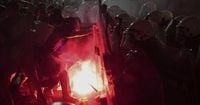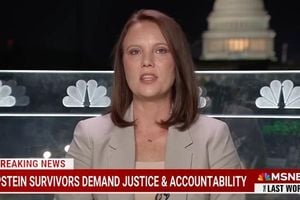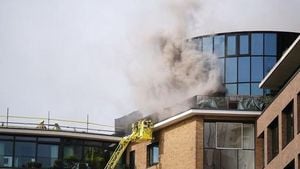On the evening of September 5, 2025, the usually peaceful university campus in Novi Sad, Serbia, became the epicenter of a dramatic confrontation between thousands of anti-government protesters and heavily armed police. The demonstrators, mostly students and young activists, had gathered in force, waving banners that read, “We don’t want blockades, we want elections,” and “Students have one urgent demand: call elections.” Their chant, “Vucic, leave!” echoed through the city’s academic heart, a rallying cry aimed squarely at President Aleksandar Vučić and his ruling Serbian Progressive Party (SNS), who have held power for over a decade.
The protest was the latest—and one of the most intense—in a series of demonstrations that have rocked Serbia for almost a year. The movement was originally sparked by a tragedy last November, when the roof of a renovated railway station in Novi Sad collapsed, killing 16 people. The disaster, which many Serbians blamed on corruption and negligence in state infrastructure projects, became a symbol of broader grievances with the government. According to Reuters, the protests have since grown into a nationwide call for accountability, transparency, and, most urgently, early elections.
Friday’s demonstration quickly escalated. As the crowd surged toward the Faculty of Philosophy, some protesters hurled flares and bottles at police lines. The response was swift and forceful: officers deployed tear gas and stun grenades, sending clouds of choking smoke billowing across the campus and scattering the crowd in chaos. The Beta news agency reported that the clashes left 11 police officers injured, though no official figures were released regarding injuries among the demonstrators.
President Vučić addressed the nation late that evening, adopting a defiant tone. “We are not going to allow destruction of the state institutions,” he declared to reporters, as cited by Reuters. “Serbia is a strong and responsible state.” The president went further, accusing foreign security services of orchestrating the protests and announced that his supporters would hold counter-rallies across the country on September 7, 2025. Despite mounting pressure, Vučić has denied all allegations of corruption, organized crime ties, and suppression of media freedoms, insisting that his administration remains committed to stability and order.
Yet, for many in Novi Sad and beyond, the president’s reassurances ring hollow. The railway station disaster remains a raw wound, emblematic of what protesters see as a pattern of government negligence and impunity. As CNN reported, the tragedy was the tipping point for a population already frustrated by years of perceived abuses of power. Since then, blockades of state universities and other acts of civil disobedience have become regular occurrences, shaking the once-unassailable position of Vučić and the SNS.
Until recently, these protests had largely been peaceful. But on August 13, violence erupted in several locations across Serbia, leaving dozens of civilians and police officers injured. Many demonstrators blame what they call heavy-handed tactics by government loyalists and the police. Videos circulating on social media and referenced by Al Jazeera show officers beating unarmed protesters and activists allegedly being assaulted in custody. The authorities, however, have consistently denied accusations of brutality, maintaining that they are simply upholding the rule of law in the face of provocations.
At the heart of the movement are Serbia’s students, who have played a leading role in organizing rallies, sit-ins, and blockades. Their message is clear: they want a government that is accountable to its citizens, not one mired in scandal and secrecy. Opposition groups and anti-corruption watchdogs have joined the chorus, accusing Vučić and his allies of using violence against political rivals and suppressing independent media. These are serious charges, and they have been echoed by international observers and local activists alike.
One protester, Nebojsa Korac, summed up the movement’s aspirations in a statement to Reuters: “The solution is to call elections. On our side, we want peace and democracy to prevail, and for political institutions to do their job. That means calling elections, and that will be the solution, because the government will change.” It’s a sentiment that resonates with many Serbians, particularly the younger generation, who see early elections as the only viable path toward meaningful reform.
The government, for its part, has not remained passive. In addition to the police crackdown, the SNS has responded to the protests by staging its own rallies across the country, seeking to demonstrate that Vučić still enjoys significant support. The president’s narrative—that the unrest is being manipulated by foreign actors and extremist groups—has found an audience among some segments of the population, particularly those wary of instability or outside interference. This has created a tense and polarized atmosphere, with both sides accusing each other of undermining Serbia’s democratic institutions.
Adding another layer of complexity, political observers have noted the appearance of billboards in Serbian cities celebrating the birthday of Alexander Lukashenka, Belarus’s authoritarian leader. These were signed by the ultra-right organization “Nashi,” which vocally supports Russian interests and opposes Serbia’s integration with the European Union. For many, the presence of such groups at the fringes of the protest movement is a reminder of the broader geopolitical stakes at play, as Serbia navigates its relationships with both Western Europe and Russia.
Throughout all this, the demands of the protesters have remained consistent: accountability for the railway station disaster, an end to corruption, and the calling of snap elections. Their banners and chants—“We don’t want blockades, we want elections,” and “Vucic, leave!”—leave little room for ambiguity. While the government has so far resisted these demands, insisting on its legitimacy and the necessity of order, the scale and persistence of the protests suggest that public dissatisfaction is not going away anytime soon.
As Serbia heads toward another round of demonstrations, the outcome remains uncertain. Will President Vučić’s strategy of defiance and counter-mobilization succeed in quelling the unrest, or will the protesters’ calls for elections eventually force a change at the top? For now, the streets of Novi Sad and other Serbian cities remain a battleground for the future of the country’s democracy, with both sides digging in for what could be a long and contentious struggle.
One thing is clear: the events of September 5 have marked a turning point, not just for Serbian politics, but for a generation of citizens determined to have their voices heard.






